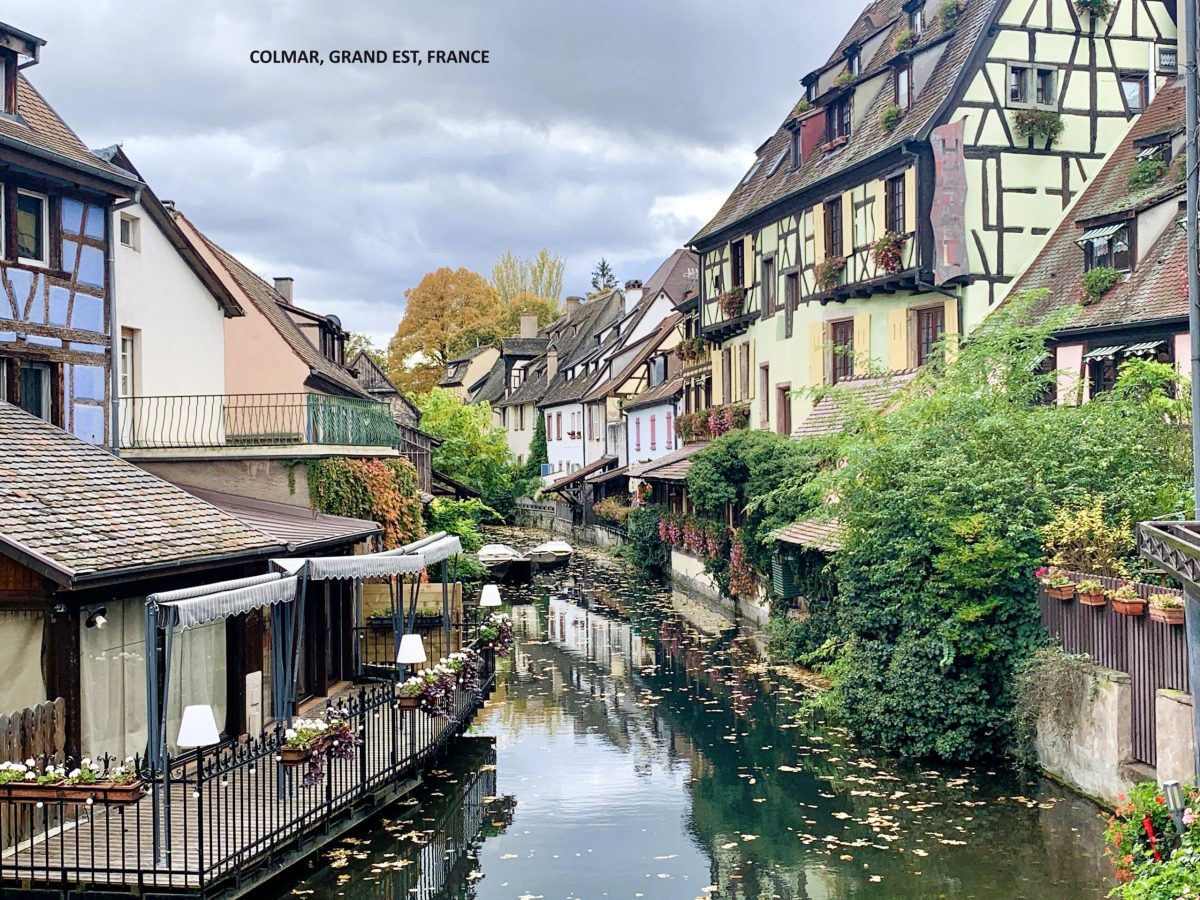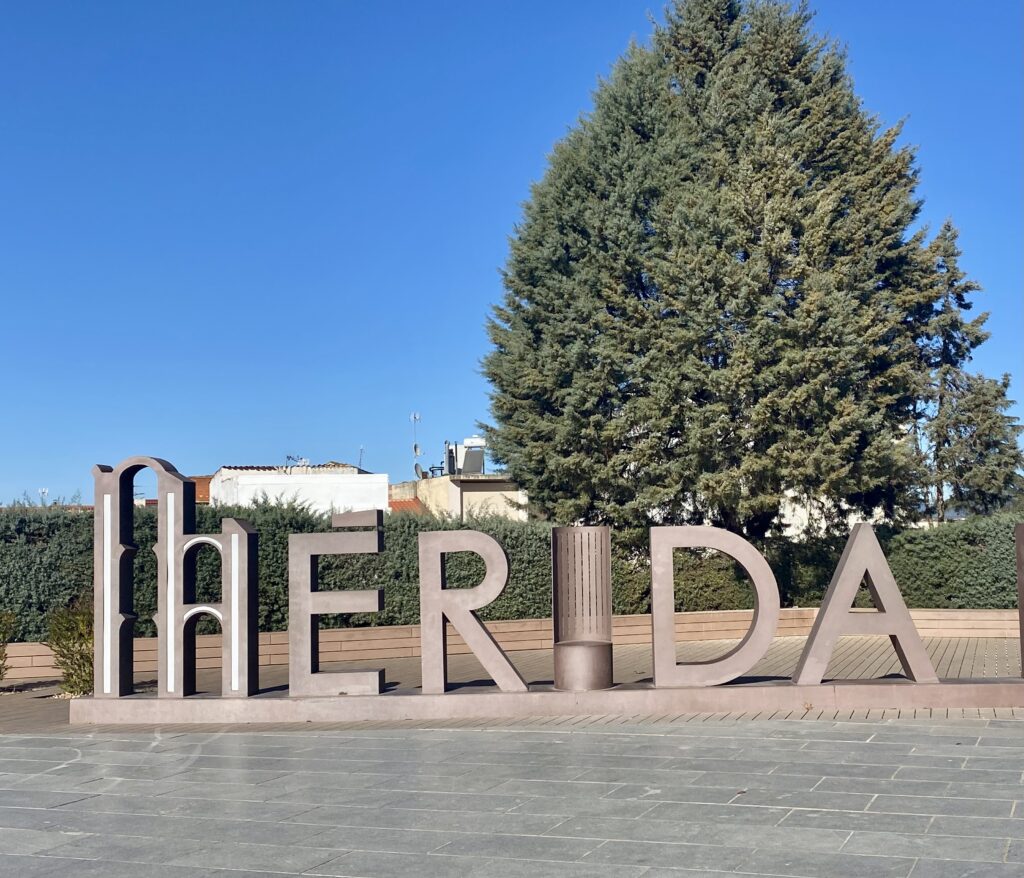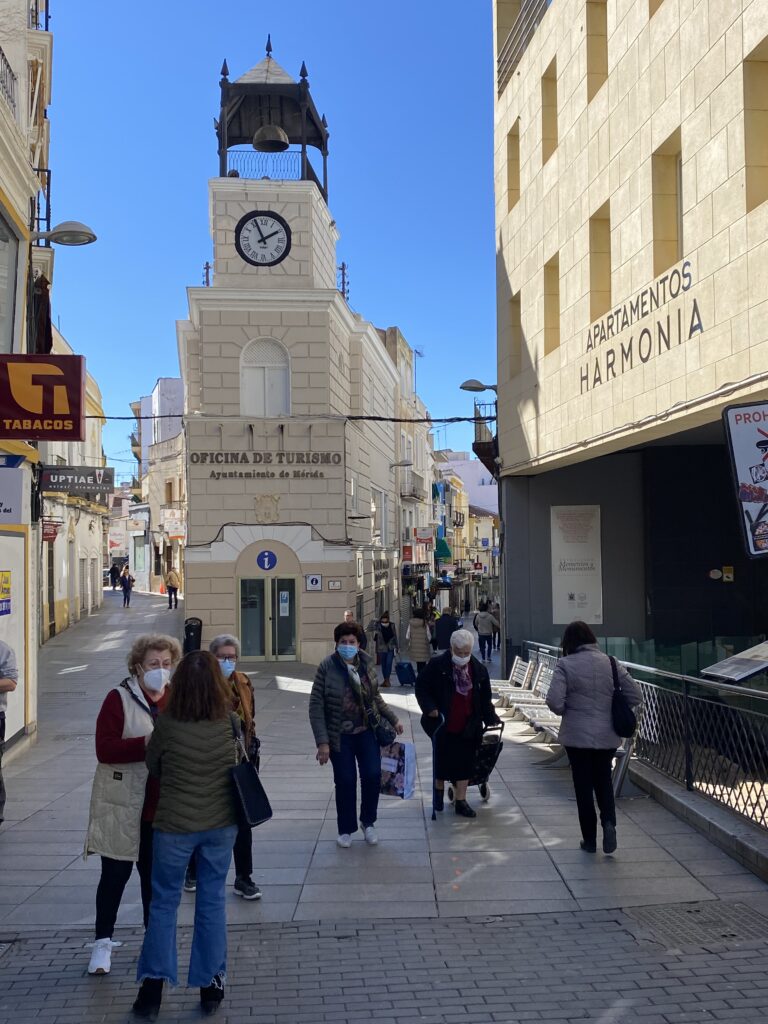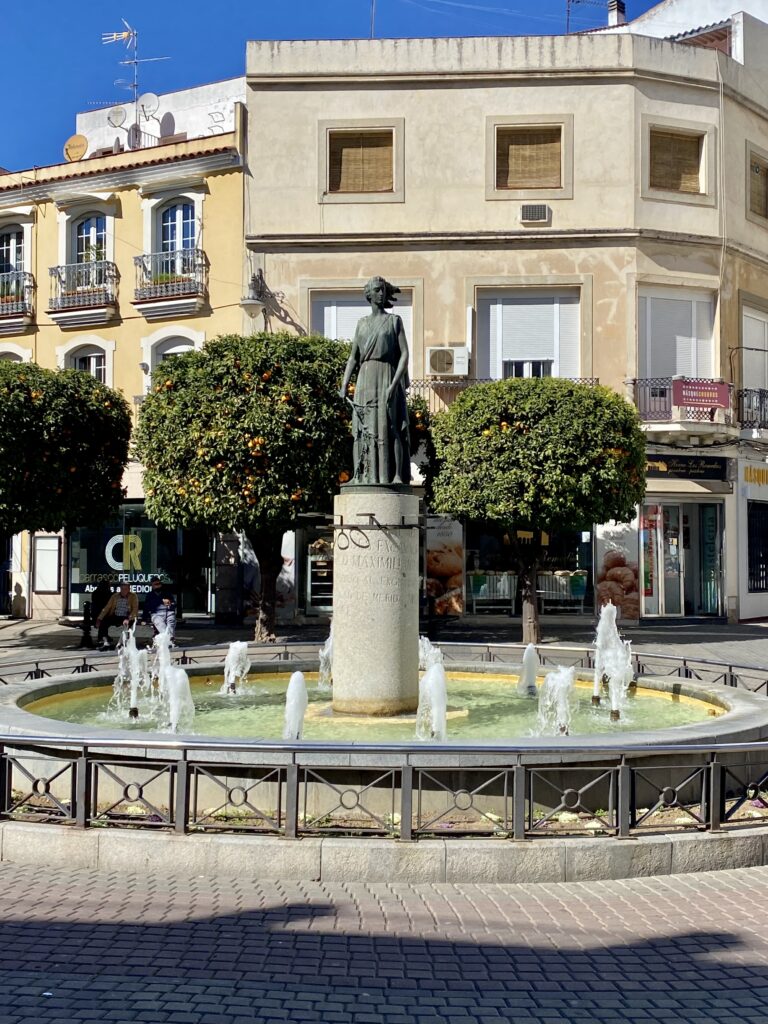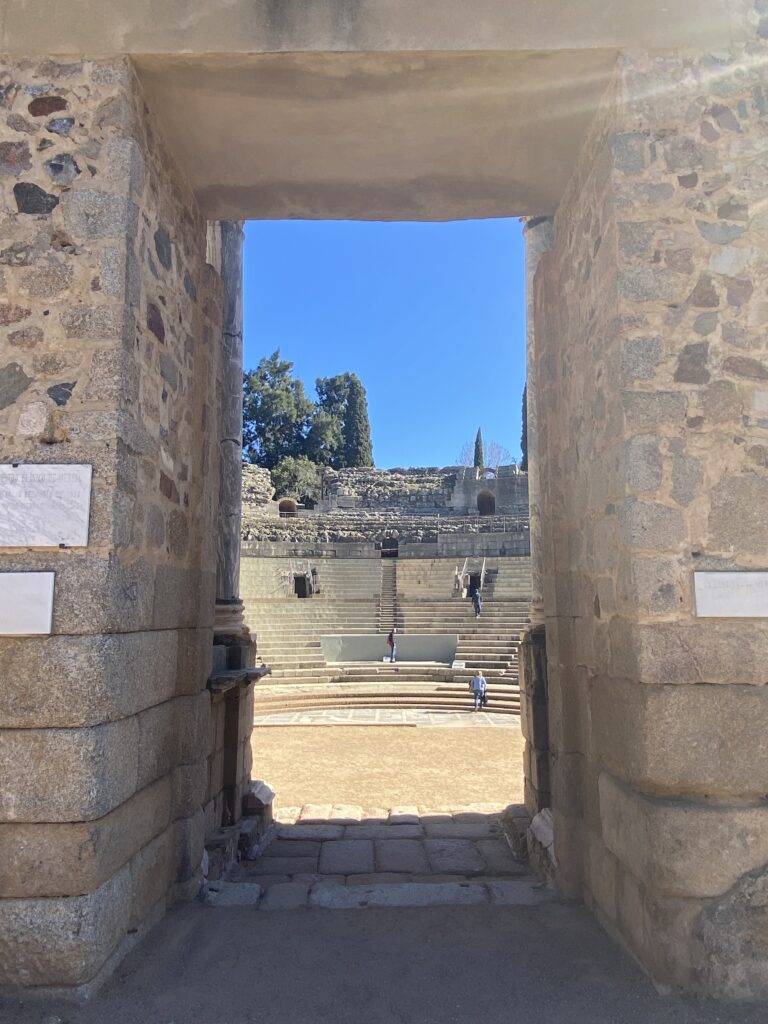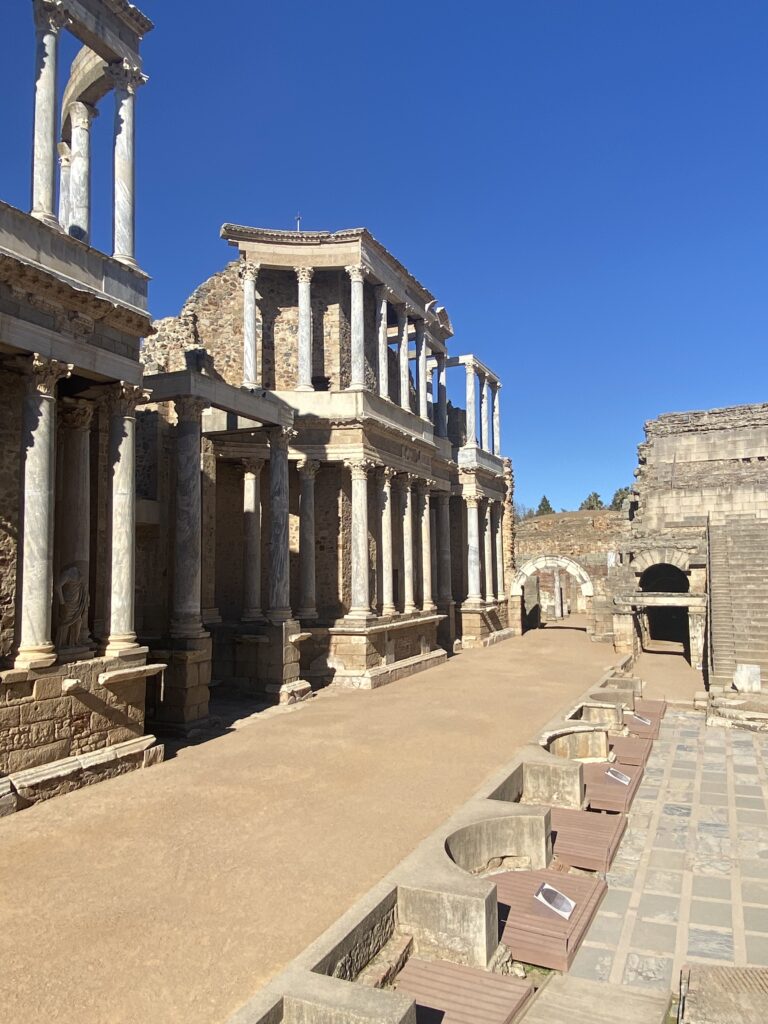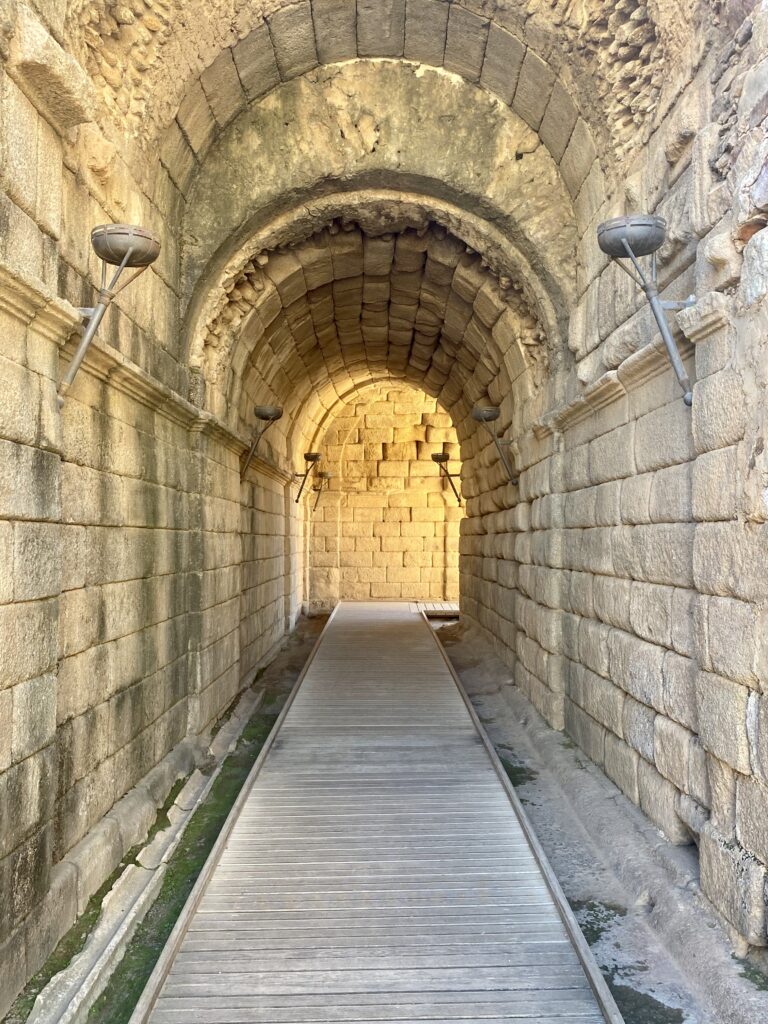Still more than a month behind. We arrived in Caceres on 22 February and as I type this blog it is 27 March.
Caceres has much going for it and is now listed among my favourite Spanish towns. We stopped just outside the town at Camping Caceres near the old football ground, Estadio Principe Felipe. At first glance Camping Caceres appears a fairly basic site in a somewhat remote location but, no, it offers everything we require (most especially a popular bar restaurant) and; each plot has it’s own bathroom/toilet and; while the city is a fair walk away, it’s a pleasant walk through and around a series of olive groves.
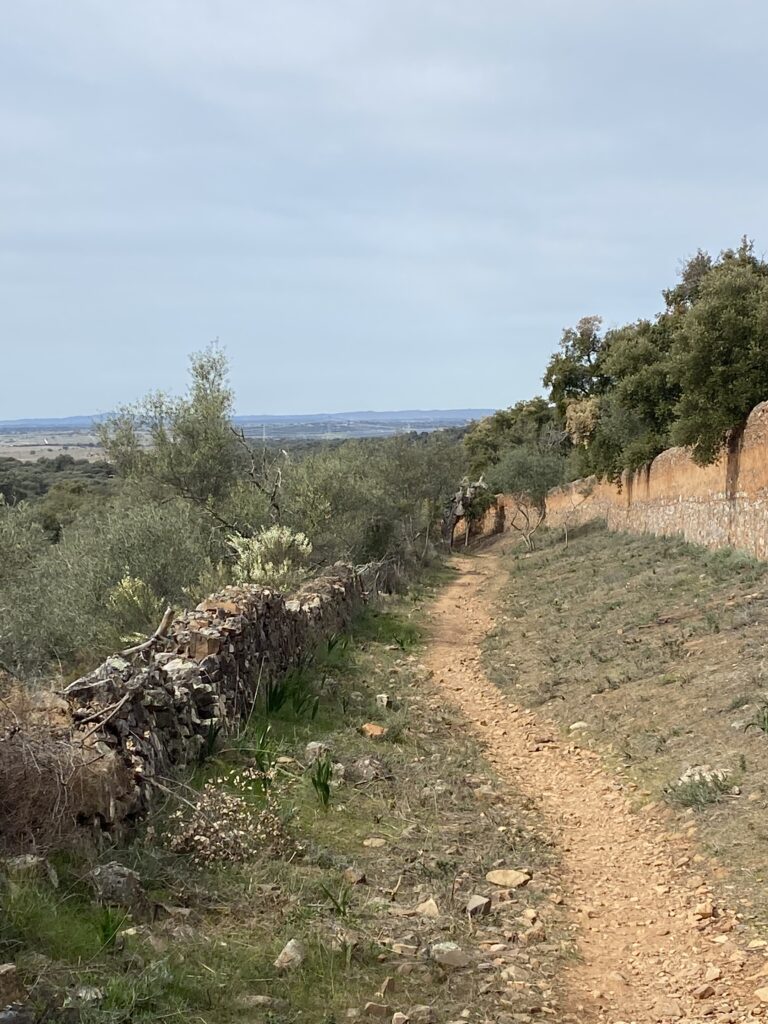
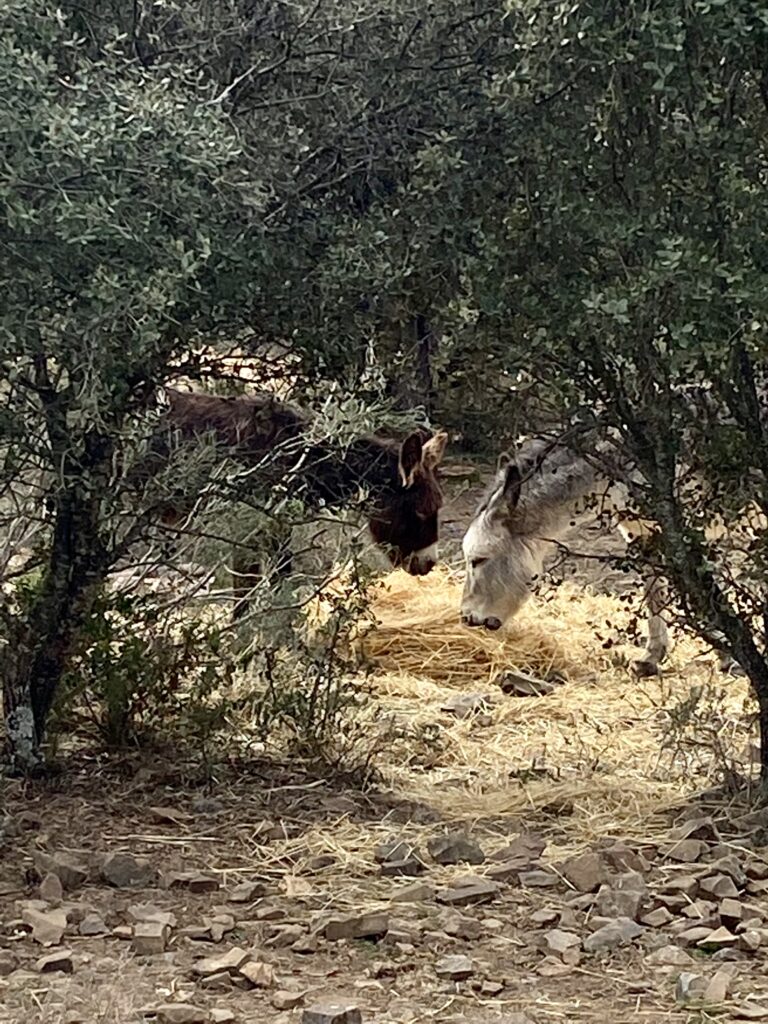
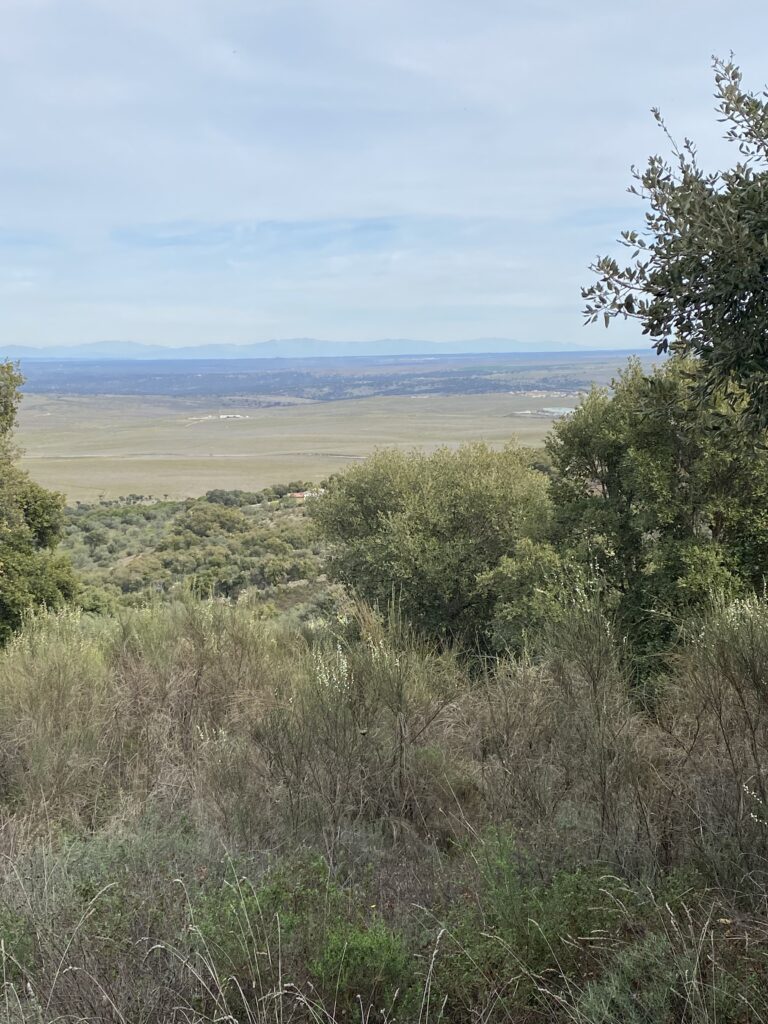
Vanya elected to stay by the Van and catch up on some Spanish homework which was set by Varndean College before we left England. I left her to it. I exercised the dogs and then set off on a further 10 mile walk to from and around Caceres.

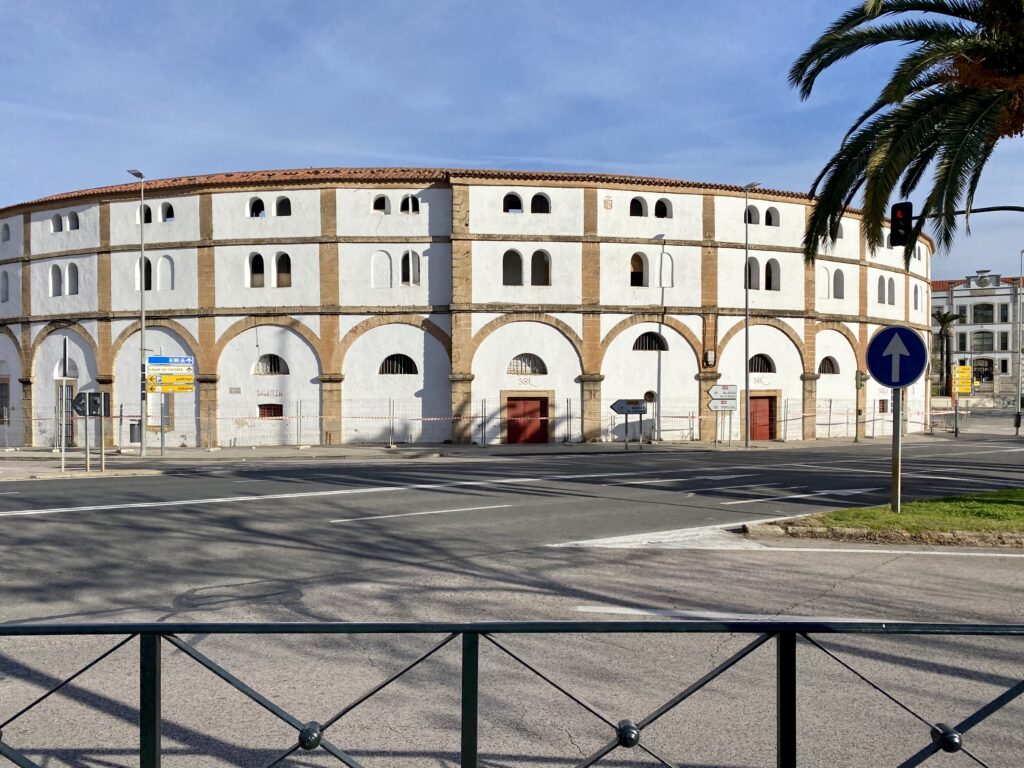
Caceres is a large town by Extremadura standards. It is a university town with some 90,000+ inhabitants and it is split into two very distinct parts, the new town and the old town. Except for Plaza Mayor, which is filled with lively bars and restaurants (and perfect for people watching), the new town does little for me but the old town more than compensates.
I sat for a while outside a bar on Plaza Mayor with a glass of the local wine and planned a route around the old town. Also known as Monument City, Caceres is considered to be one of the most beautiful cities in Spain and in 1986 was the first city in Spain to be declared a UNESCO World Heritage Site. It comprises a mix of early Middle Ages and Renaissance buildings all enclosed within ancient Roman and/or Moorish stone walls and it is full of character and quite beautiful.
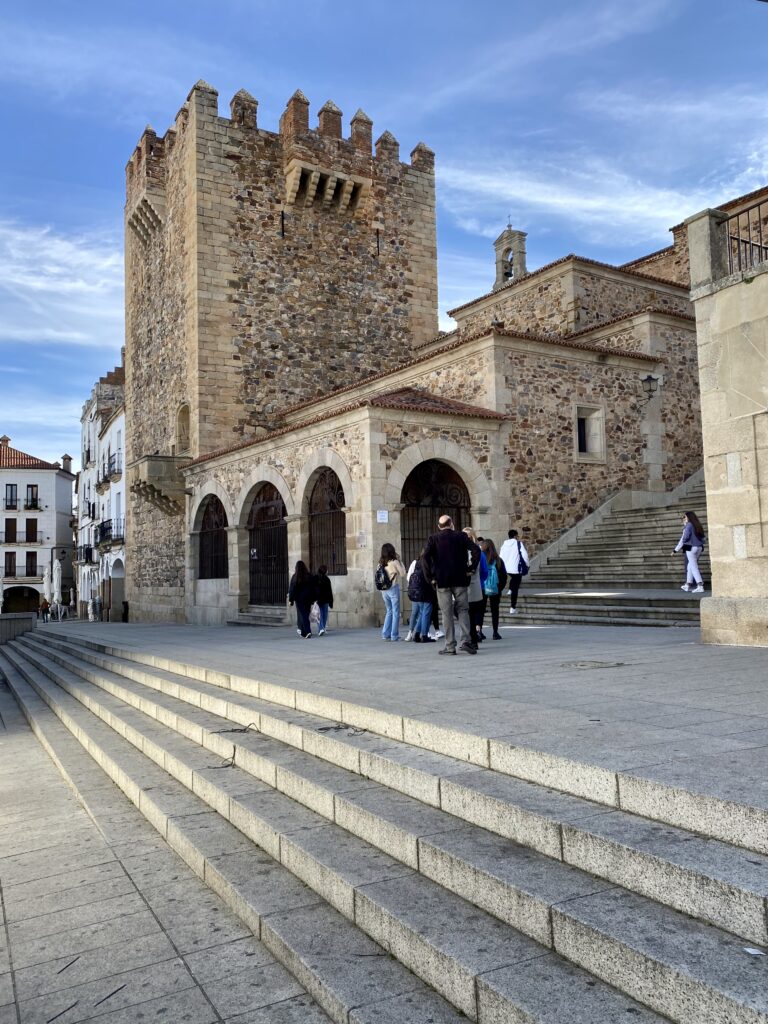
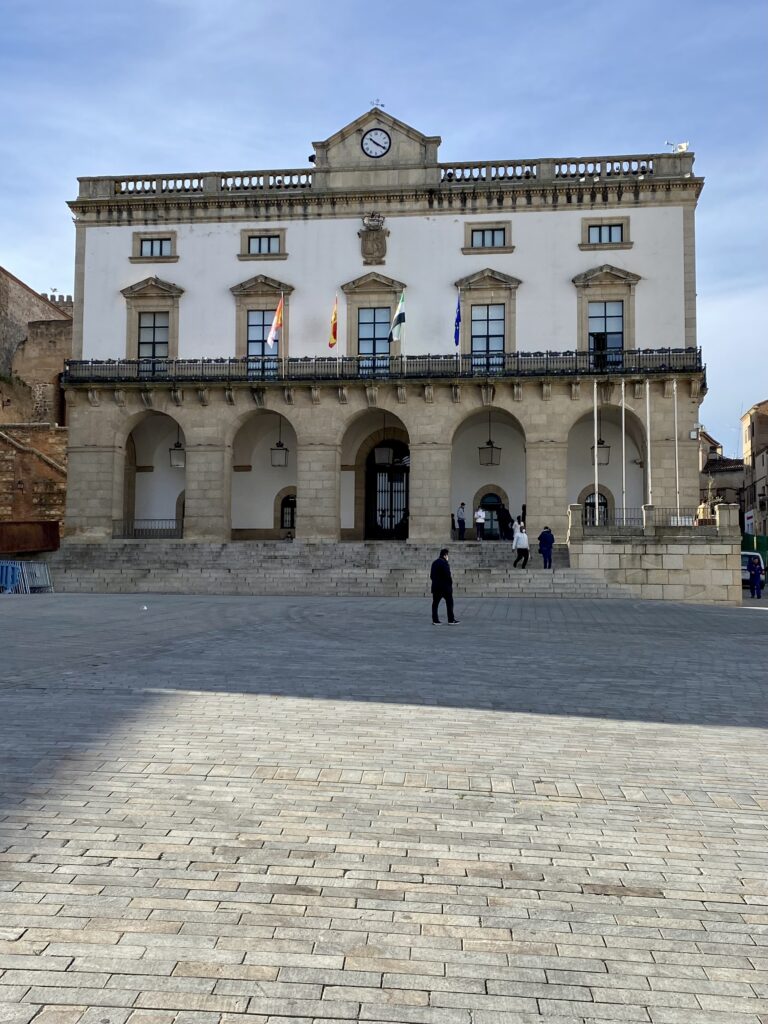

Entering La Ciudad Monumental from Plaza Mayor through the Arco de la Estrella is like being transported back in time. As you walk the narrow cobbled lanes between the palaces, mansions and churches there is no sign of anything modern in the old town. Little wonder that the place has featured in countless historical dramas (and, more recently, in Game of Thrones although I’m thinking that almost everywhere worth visiting has featured in Game of Thrones).
My earlier route planning over a glass of wine went to pot the moment I entered the old town. It’s a captivating tangle of cobbled streets, small squares and palatial buildings. You go where the fancy takes you and all the better if you end up retracing your steps. You’ll see things you missed the first time around.

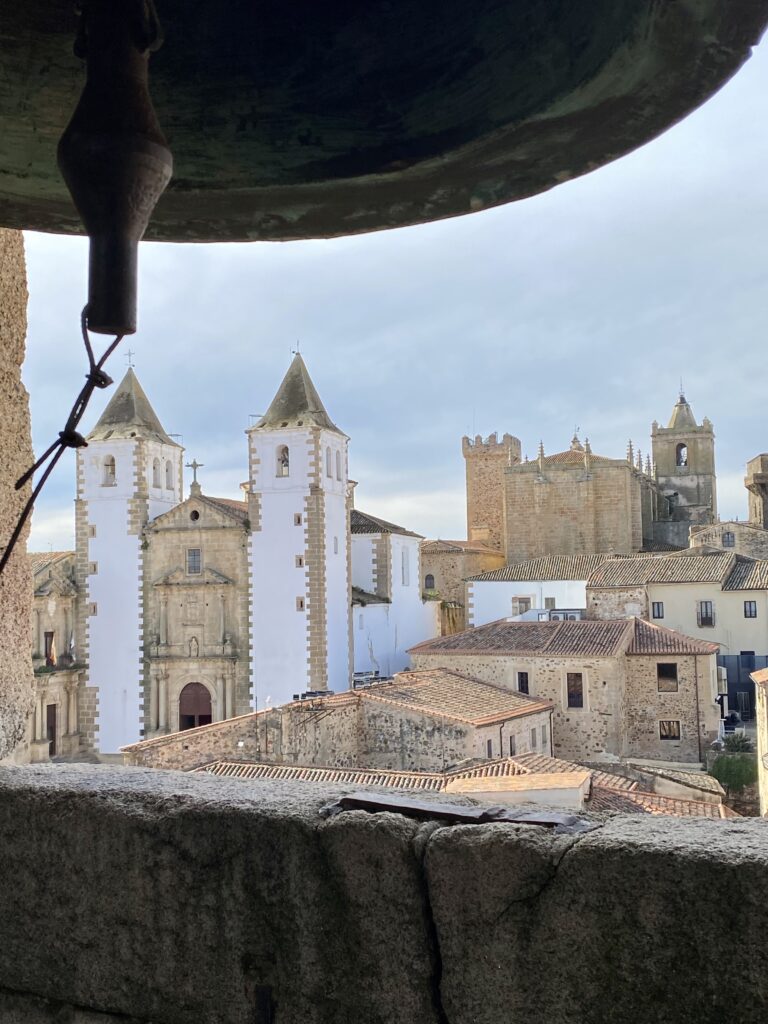
This particular blog would stretch into pages if I were to wax lyrical about all of the buildings I visited during my time in Caceres so, I’ll focus on just two of the more interesting places namely, the Santa Maria Cathedral and the Palace de los Golfines de Abajo.
Built as a church fortress, the outside of the Santa Maria looks a very modest 15th century gothic cathedral (with just a small statue of San Pedro de Alcantata outside to set it apart from countless other large medieval buildings in the city) but inside, it is something else. It has three naves each of which hold some wonderful pieces of romanesque art (including a crucifix with a black Christ) but the most remarkable is the central nave with it’s 16th century cedar altarpiece sculpted by Roque Balduque. It is breathtakingly beautiful. The cathedral has many other interesting features, including flagstones depicting the coats of arms of the region’s most influential families and a small museum of religious artifacts both of which I paused to admire but, it is the walk up the spiral staircase to the bell tower with it’s amazing panoramic views over the old town that hooked me.

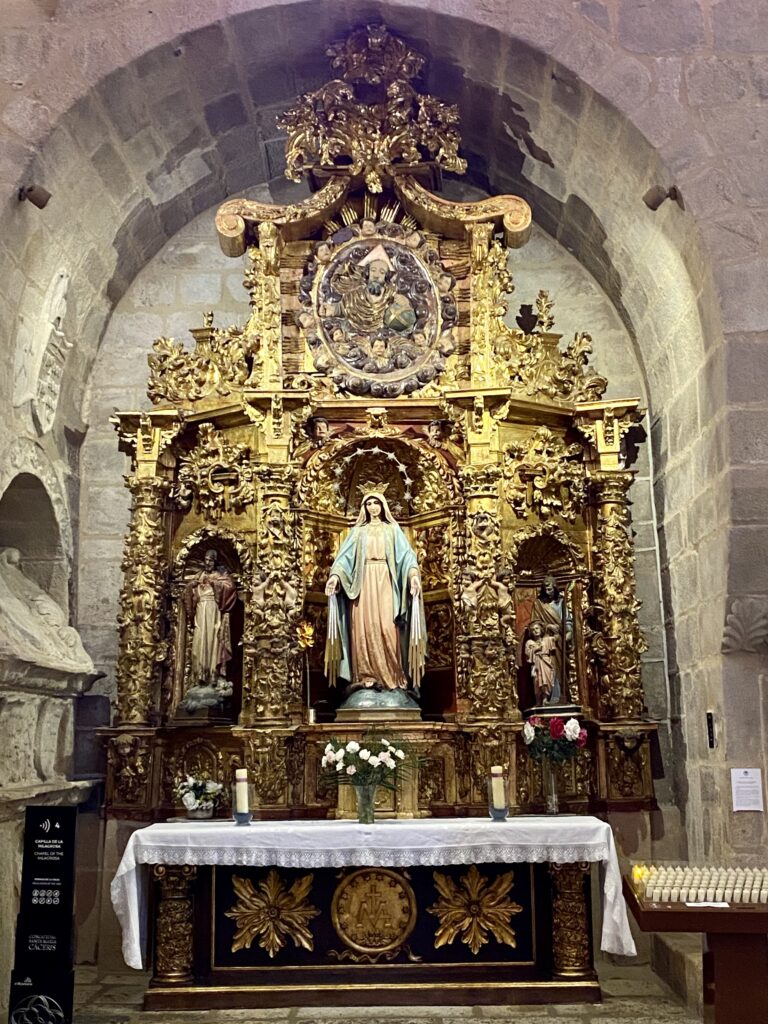
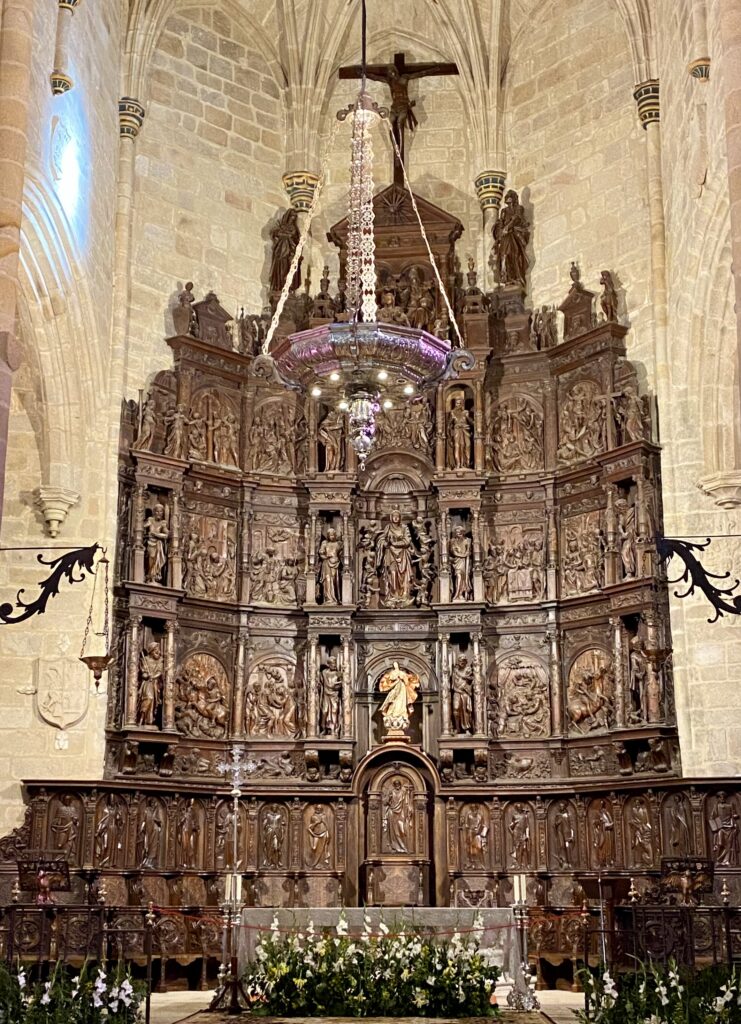

The Palace de los Golfines de Abajo is the largest and most impressive of the city’s palaces. It was built piecemeal between the 14th and 20th centuries and has long been home to the Golfin family. I visited Caceres out of season and so couldn’t join one the theatrical guided tours which are supposedly quite enthralling but it was still worth going inside. The palace is crammed with historical treasures.
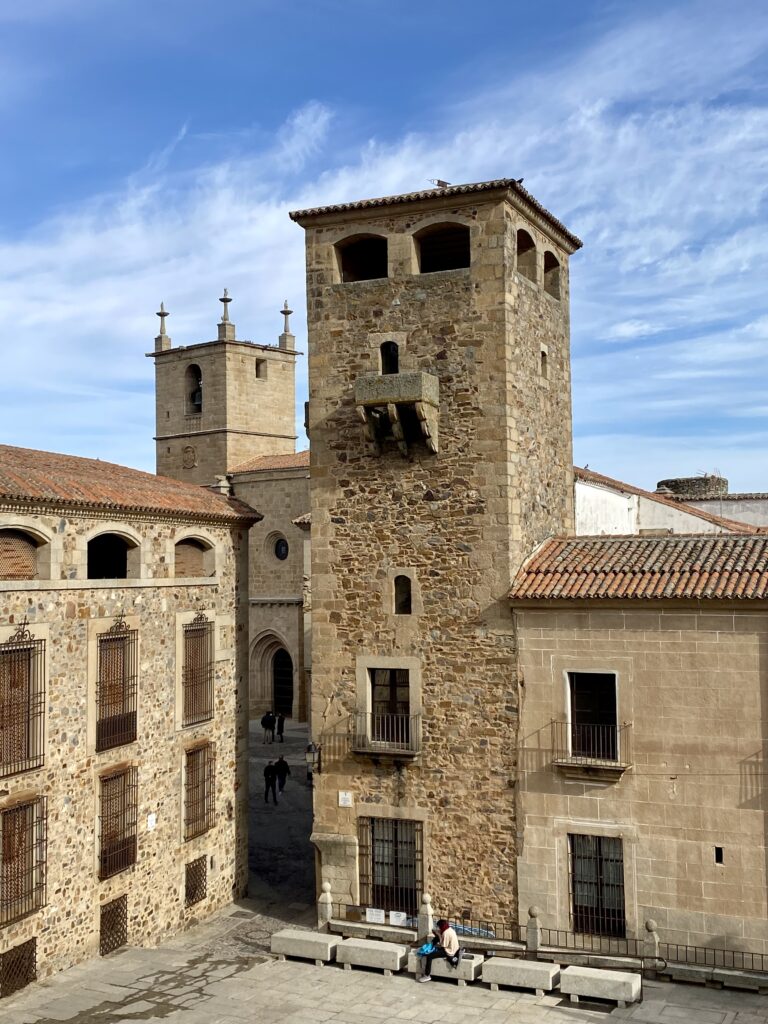

One place I missed during our visit to Caceres is the Cave of Maltravieso which can be found at the edge of the town. Caceres was developed by the Romans at much the same time as they built Merida in 25BC but, there is evidence of ‘human’ life in the area some 350,000 years before then. The Cave holds many ancient painting/stencils dating back to Neanderthal times.

